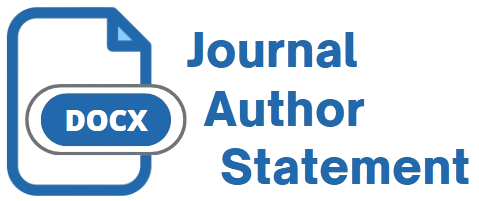Relationship Between Education Level and Elderly Compliance in Hypertension Treatment in The Work Area of Datah Kotou Community Health Center
DOI:
https://doi.org/10.56359/igj.v4i2.589Keywords:
Adherence, Education, Elderly, Hypertension, TreatmentAbstract
Background & Objective: Hypertension is a common health issue among the elderly, with prevalence increasing as age advances. According to data from the WHO, approximately 1.13 billion people worldwide suffer from hypertension, with the elderly being the most vulnerable group. Poor management of hypertension can lead to serious complications such as stroke, heart failure, and chronic kidney disease. Adherence to treatment is crucial to prevent these complications. However, many elderly individuals, especially those with low education levels, struggle to understand medical instructions and the importance of medication. This study aims to analyze the relationship between education level and adherence to hypertension treatment among the elderly in the working area of Puskesmas Datah Kotou, Puruk Cahu.
Methods: This research employs a quantitative design with a cross-sectional approach. The sample consists of 30 elderly individuals diagnosed with hypertension, and data were collected through a questionnaire measuring education level and adherence using the Morisky Medication Adherence Scale (MMAS-8).
Results: The results indicate that 83.3% of respondents have a low education level (elementary school), and 63.3% show low adherence to treatment. Statistical analysis reveals a significant relationship between education level and adherence, with a correlation coefficient of 0.691 and a p-value of 0.000.
Conclusion: This study concludes that education level significantly affects the adherence of the elderly to hypertension treatment, highlighting the need for more effective health education interventions.
Downloads
References
Ajzen, I. (2020). The Theory of Planned Behavior. Organizational Behavior and Human Decision Processes, 50(2), 179-211.
Anderson, J., & Lee, P. (2023). Education and healthcare access: Bridging the gap. Journal of Health Education Research, 48(2), 221-235.
Ariani, D., & Sugiharto, S. (2020). Pengaruh Edukasi Kesehatan terhadap Kepatuhan Pengobatan Hipertensi pada Lansia. Jurnal Keperawatan Indonesia, 23(1), 45-51.
Baker, D., Smith, R., & Kim, Y. (2019). The role of health literacy in patient compliance: A systematic review. International Journal of Public Health, 32(4), 187-199.
Davis, K., Turner, S., & Brown, M. (2021). Family support and patient adherence: A systematic review. Health & Society Journal, 27(3), 321-338.
Johnson, L., Nguyen, M., & Patel, R. (2022). The influence of health literacy on chronic disease management. Global Health Journal, 40(2), 156-172.
Kementerian Kesehatan Indonesia. (2023). Laporan Tahunan Kesehatan Masyarakat Indonesia. Jakarta: Kemenkes RI.
Nguyen, M., Davis, K., & Turner, S. (2021). The role of gender in health-seeking behavior: A global perspective. Global Health Review, 29(4), 501-518.
Sari, H.S.P., Wiyono, J., & Adi, R.C.W. (2018). Hubungan Tingkat Pengetahuan Lansia tentang Hipertensi dengan Kepatuhan dalam Meminum Obat di Posyandu Lansia Drupadi. Nursing News: Jurnal Ilmiah Keperawatan, 3(1).
Sukadana, I., et al. (2021). Hubungan Tingkat Pendidikan dengan Kepatuhan Lansia dalam Pengobatan Hipertensi di Kalimantan Tengah. Jurnal Kesehatan Masyarakat, 13(2), 33-41.
World Health Organization (WHO). (2021). Adherence to long-term therapies: Evidence for action. World Health Organization.
Downloads
Published
How to Cite
Issue
Section
License
Copyright (c) 2025 Rina Triani, Rian Tasalim, Subhannur Rahman, Muhammad Wijaksono

This work is licensed under a Creative Commons Attribution 4.0 International License.

















